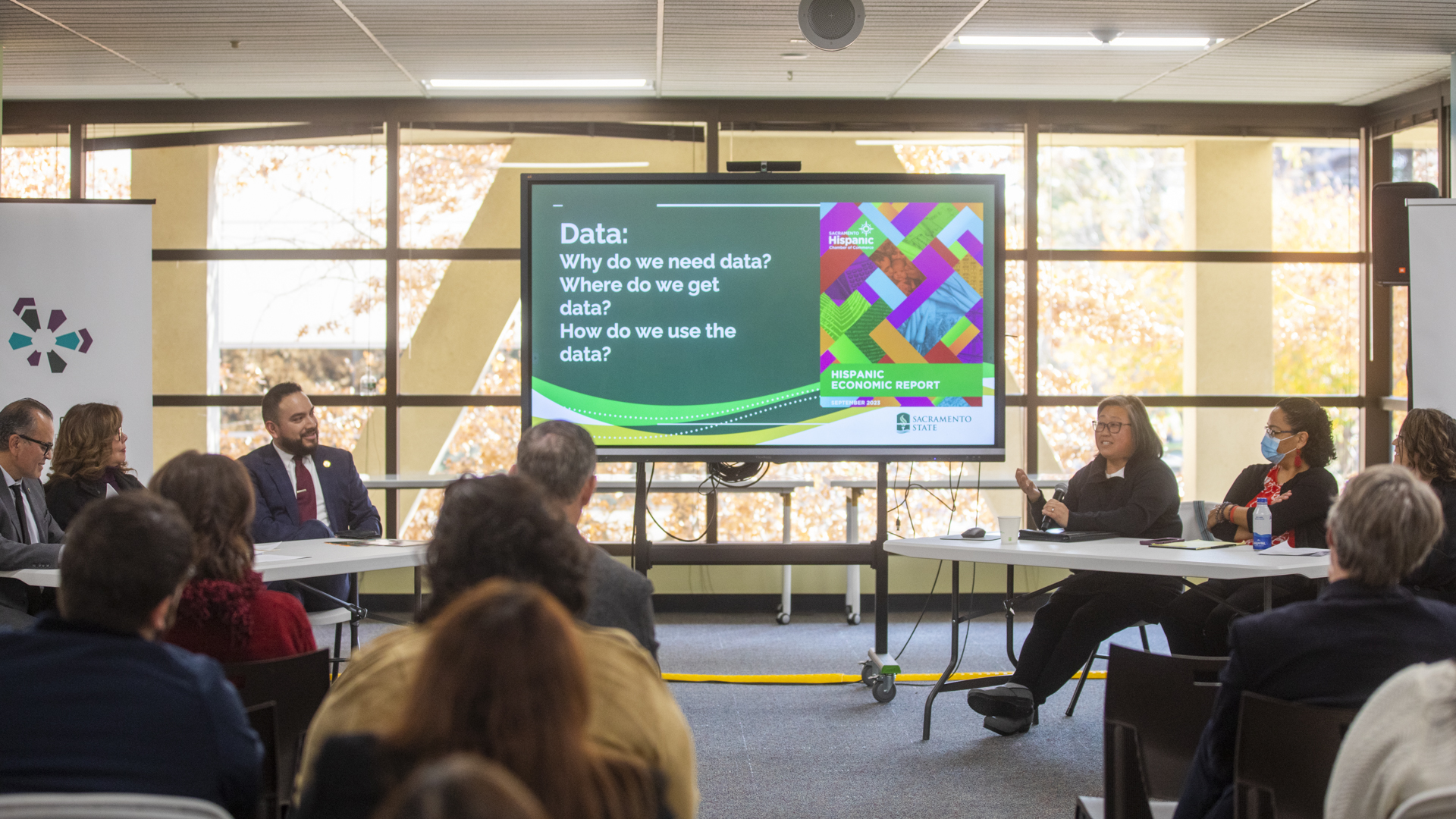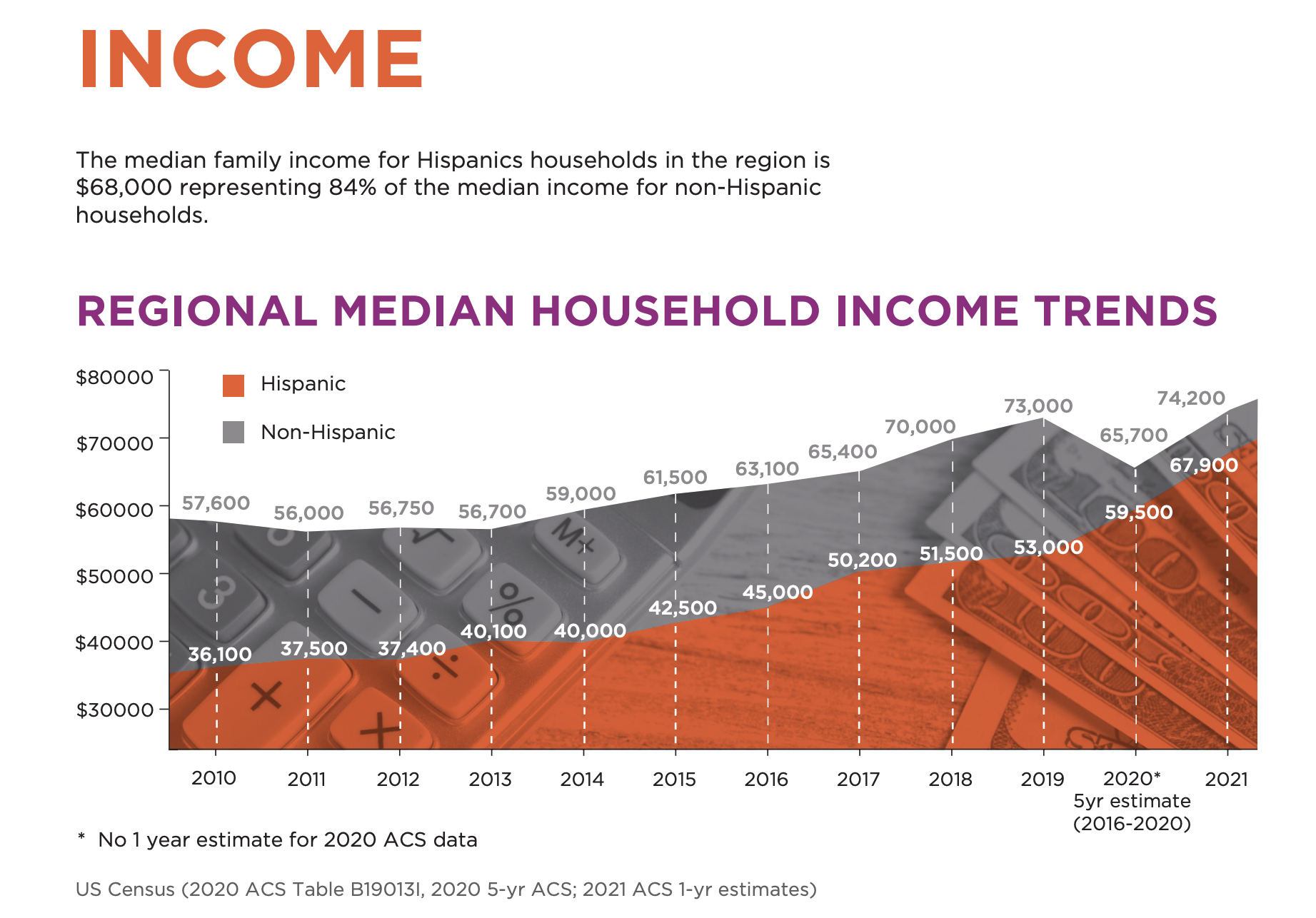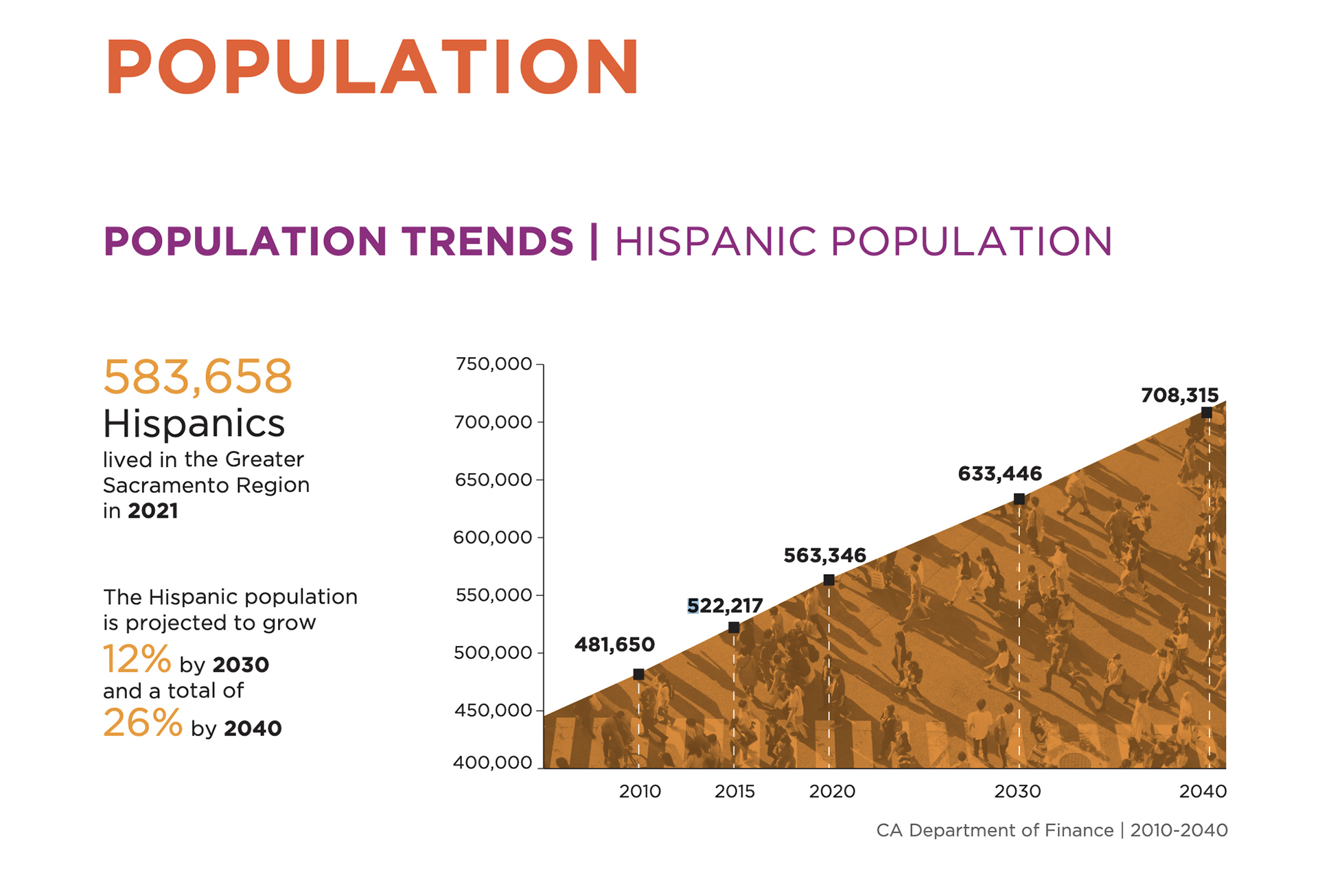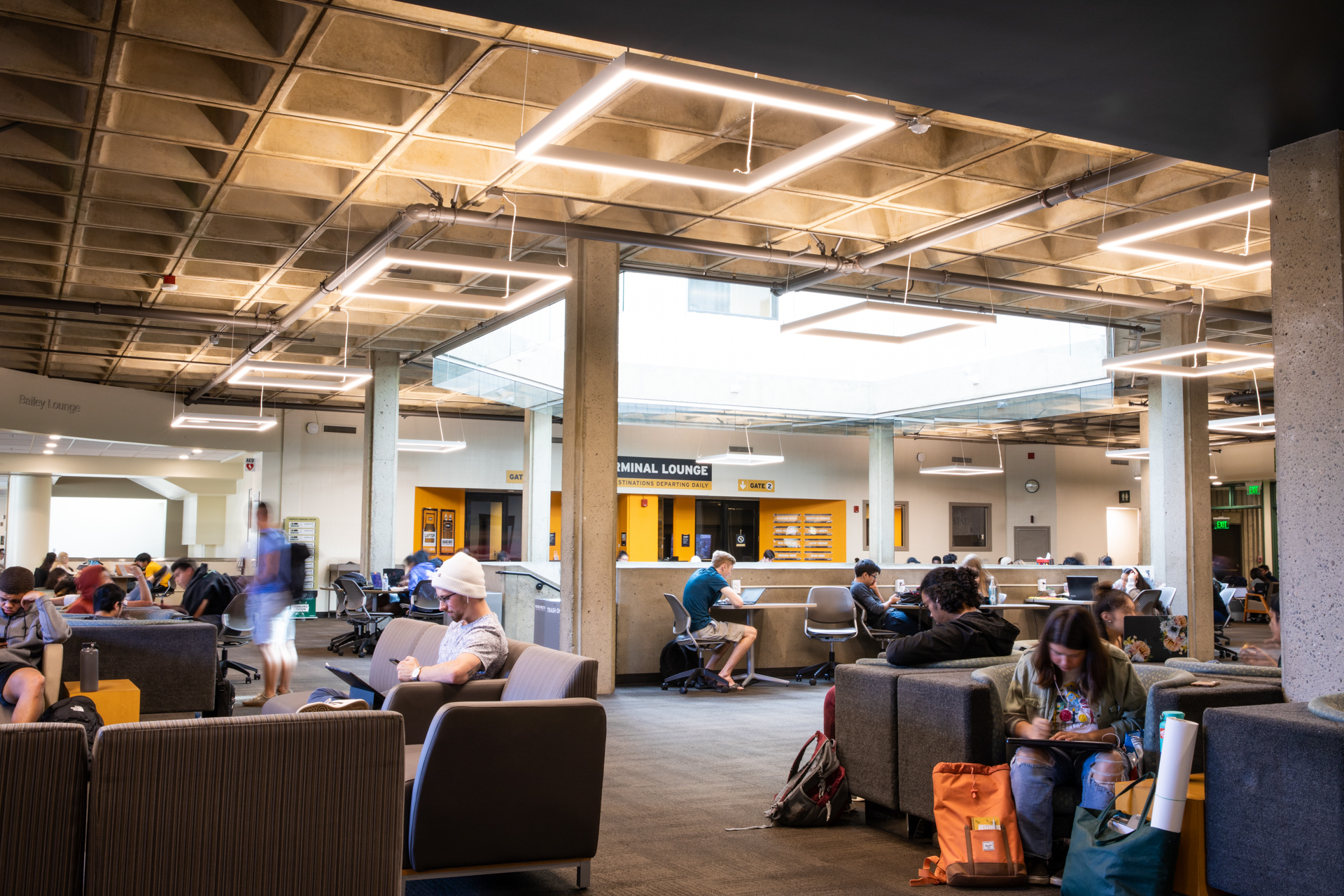Story Content
Hispanics help fuel the region’s economy, but face significant inequities, report shows

December 01, 2023
Hispanics are a growing part of the Sacramento region’s economy, with nearly 70 percent reporting that they work full time, according to data recently presented at Sacramento State.
But many are unable to access basic needs, such as medical care and health insurance, a report prepared by the Hispanic Chamber of Commerce and based on work by Sac State researchers and the Sacramento Area Council of Governments (SACOG) shows.
A panel discussion led by Sac State interim provost and vice president for Academic Affairs Carlos Nevarez at Sac State’s Carlsen Center analyzed results of the Hispanic Economic Report, which offers insight into issues affecting the area’s Latine population.
The discussion included Sac State faculty members Elvia Ramirez and Heidy Sarabia from the College of Social Sciences and Interdisplinary Studies, who conducted research for the economic report. Also represented were members of the Hispanic Chamber and SACOG. Rita Gallardo-Good, Sac State’s senior vice president for Public Affairs and Advocacy, also spoke at the event.
“We need to make sure our communities are part of the region’s growth.” -- Juan Novello, Sacramento Hispanic Chamber of Commerce vice president
To produce the report, the two Sac State researchers and SACOG analyzed data from the U.S. Census and other federal and state agencies. The research team and the Hispanic Chamber also interviewed community members about topics including income, education, digital access, and employment.
Participants in the survey were drawn from a panel of regional residents assembled by Sac State's Institute for Social Research.
Nevarez said the report and panel discussion reflect the University’s commitment to Latine students. Sac State is a federally designated Hispanic Serving Institution, with more than a third of its students identifying as Latine. The University for the second time won a coveted Seal of Excelencia for its programs and policies that serve Latine students.
About 28% of more than 9,000 students who graduated from Sac State this year were Latine, Nevarez said. While that number is impressive, “we still have gaps to fill,” he added, noting that the University is working to ensure that its faculty better reflects the cultural backgrounds and experiences of its students.
The economic report also reflects the considerable contributions that Hispanic residents are making to the Sacramento area, said Nevarez, and offers “a roadmap for solutions” to inequities that affect them.
“We need to make sure our communities are part of the region’s growth,” said Hispanic Chamber Vice President Juan Novello. Data is a critical part of the equation, he said, because it can provoke conversations, correct misperceptions, and educate people about Latine residents and their contributions and challenges.
Among the report’s findings:
- 23% of residents of the six-county greater Sacramento region are Hispanic, a number that is expected to grow 12% by 2030 and 26% in 2040.
- More than 60% of Hispanic adults in the Sacramento area were born in the United States, and nearly 80% are U.S. citizens.
- The median annual income for Hispanic households is $68,000, compared with $81,000 among non-Hispanics.
- While about 23% of non-Hispanic residents have a bachelor’s degree, only 13% of Hispanics do.
Sarabia, an associate professor of Sociology, pointed out that Latines are more likely than other ethnic groups to work in jobs such as house cleaning and landscaping that generally pay less and are less likely to offer health insurance. Fewer Latines have retirement and savings accounts, and more of them report being unable to pay medical bills.
Novello said the Hispanic Chamber plans to use the report’s data to identify ways to uplift Latine individuals and businesses with the help of elected officials, community leaders, and businesses.
Priority areas include programs and policies aimed at helping Latines with educational attainment, financial literacy, and access to home ownership and health care.
The report highlights various initiatives designed to help achieve such goals, including the Northgate Boulevard Economic Plan; Sac State’s Anchor University grants, which can be used to uplift traditionally underrepresented communities; and efforts to elect more Latine individuals to school boards, city councils, county boards, and the state Legislature.
For the full report, go to https://sachcc.org/report/.
Media Resources
Faculty/Staff Resources
Looking for a Faculty Expert?
Contact University Communications
(916) 217-8366
communications@csus.edu




